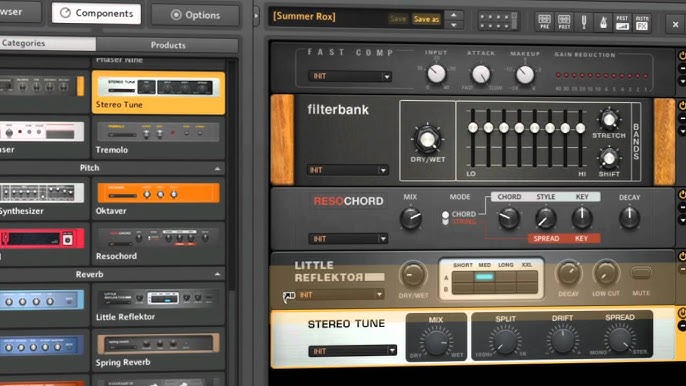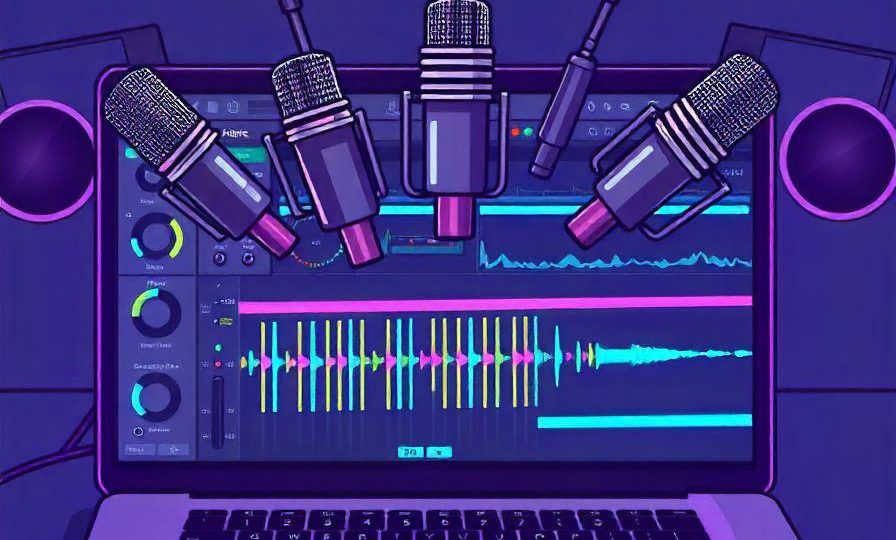Beatmaking 101-Mastering Vocal Chops in Trap Beats
Vocal chops have become a much used element in modern trap-inspired beats. They are great at adding texture, rhythm, and an emotional edge. When done right, vocal chops can create dynamic layers or even act as a defining lead element. This guide covers essential techniques to help you master the art of the vocal chop.
Sample Selection
The key to creating great vocal chops lies primarily in the samples you select. It’s therefore worth taking the time to find the right one. Using royalty-free samples is the perfect solution as it offers a huge variety as well as ensuring you avoid any legal complications down the line. Look for vocal packs from reputable sources or subscription services that specifically offer royalty-free material. And of course, we have a vast abundance of vocal samples on RouteNote Create.
The other feature of royalty-free samples is they typically come in various keys, tempos, and tones. Having this information can make it easier to find the perfect vocal match for your beat. Consider the vocal’s tonality and mood when matching your samples to your track. For example, a vocal with a deeper, atmospheric quality may favour dark trap beats, while lighter, airy vocals work well for more melodic or ambient trap styles. Vocal phrases that include little runs or expressive syllables can be particularly effective when chopped.
Chopping Techniques
So now that you have some ace vocal samples it’s time to get chopping and give them your own stamp. Vocal chopping is the process of breaking down the vocal sample into smaller segments. This allows you to arrange the chops so they rhythmically fit the beat. There are various ways to chop samples depending on the feel you’re aiming for:
- Phrase Chopping: Slice the sample into small phrases or syllables, allowing you to rearrange them into a fresh rhythm. This approach is great for creating melodic lines or unique rhythmic patterns.
- One-Shot Slices: Choose single notes or syllables from the vocal sample to create one-shot chops, which you can trigger rhythmically like a drum hit. This is ideal for percussive vocal textures.
Most digital audio workstations (DAWs) will have built-in samplers with functions for effective slicing. FL Studio’s SliceX and Ableton’s Simpler are both well equipped for creating precise chops. Experiment with slicing lengths, as sometimes shorter chops make for tighter, punchier vocal rhythms, while longer phrases add a more fluid, melodic quality. A good technique is to only select a sample start point leaving the rest of the vocal sample to play. This way you can adjust the sample lengths in your MIDI piano roll. Note* If using this method be sure to set sample playback so that the sample stops playing once you take your finger off the key or pad.
Pitch Shifting and Key Matching
Once you’ve chopped your sample, it’s essential to match the pitch of the vocal to the key of your beat. Most royalty-free samples will have the key information labelled. This makes it easy to transpose your sample to match your track.
Adjust your pitch to bring the vocal sample in line with your beat’s key, while extreme shifts (up or down) can create new textures. For example, pitching a vocal down an octave adds a moody, deep tone, whereas pitching it up creates a more whimsical or playful feel.
Most DAWs allow you to handle this natively, which makes for a simple intuitive workflow. For more advanced Pitch-shifting there are 3rd party plugins like Melodyne or Autotune that specialise in detailed adjustments.
And finally, even if the key information for your vocal samples and track’s melody matches, always trust your ears as the final judge. If something sounds out of key, address it—don’t rely solely on the provided key info.
Adding Effects for Texture and Depth
One of the fundamental characteristics of vocal chops in Trap is the application of Reverb and associated effects. Effects such as these are used to give character and texture as well as help the vocals sit in the mix.
Let’s look at some of the most common types of effects use.
- Reverb: Reverb is used to add depth and create a sense of space. A subtle reverb works well to make the vocals sound natural and within the beat, while larger reverbs can add a dream-like, ambient quality to the chops. You will often hear trap vocals that use a 100% wet reverb signal for an even more ethereal effect.
- Delay: Adding a delay can introduce rhythmic movement, allowing the vocal chop to echo and trail off. Sync the delay to your beat’s tempo for full cohesion.
- Distortion and Bitcrushing: Adding distortion or bitcrushing can give your vocal chops a gritty, raw edge. These effects are especially useful for more aggressive trap beats and can add heaps of character.
You don’t need to just settle for one form of processing. Why not experiment with layering effects. For instance, try a combination of reverb and delay for a spacious feel or blend light distortion with reverb for a textured, vintage vibe. And why stop there? These’s a myriad of interesting effects to mess with out there from modulation to phasing through to lofi wobble effects and Leslie cabinet sims.
For more creative ideas on how to get really creative with your vocal samples check out this post.

Sequencing and Layering Vocal Chops
Now that your chops are tuned and you have added some texture, it’s time to program them into your track. There are numerous approaches to the way you sequence vocal chops.. They can either create a focal point in the beat or simply add subtle, rhythmic texture. You may, for instance, just want to sprinkle a few choice vocal chops here and there throughout the arrangement.
- Rhythmic Sequencing: Arrange chops in sync with your beat’s rhythm. For example, placing chops on the off-beats or filling in gaps in your hi-hat patterns creates an organic feel and syncopated groove.
- Layering with Other Elements: Try layering vocal chops with synths, pads, or even percussion to enhance their presence. You can also create interesting harmonies by layering pitched-down or pitched-up duplicates of the chop. Or to create added depth add low level duplicates that are pitched up or down (or both) a whole octave.
- Variation and Dynamics: Avoid repetitive patterns by creating slight variations in pitch, timing, or effects on different parts of the track. This will keep the beat engaging throughout. If you are arranging a beat that has a vocal on it then the vocal can act as a useful guide to where you can place your vocal chops.
Conclusion
Mastering vocal chops is all about experimentation and attention to detail. Executed well, vocal samples can help turn a good beat into a great beat. They have the power to add variety and interest where the rest of the beat may be quite restrained or repetitive.
Don’t be afraid to try new things—some of the best vocal chops can come from unexpected decisions. The more you experiment, the easier you will find it to integrate vocal chops seamlessly into your productions. So go get your chop on and see what you can cook up.
Remember – RouteNote Create subscriptions start from as little as $2.99. You also get 10 FREE credits to spend on samples along with access to our FREE sample pack bundle when you sign-up!
